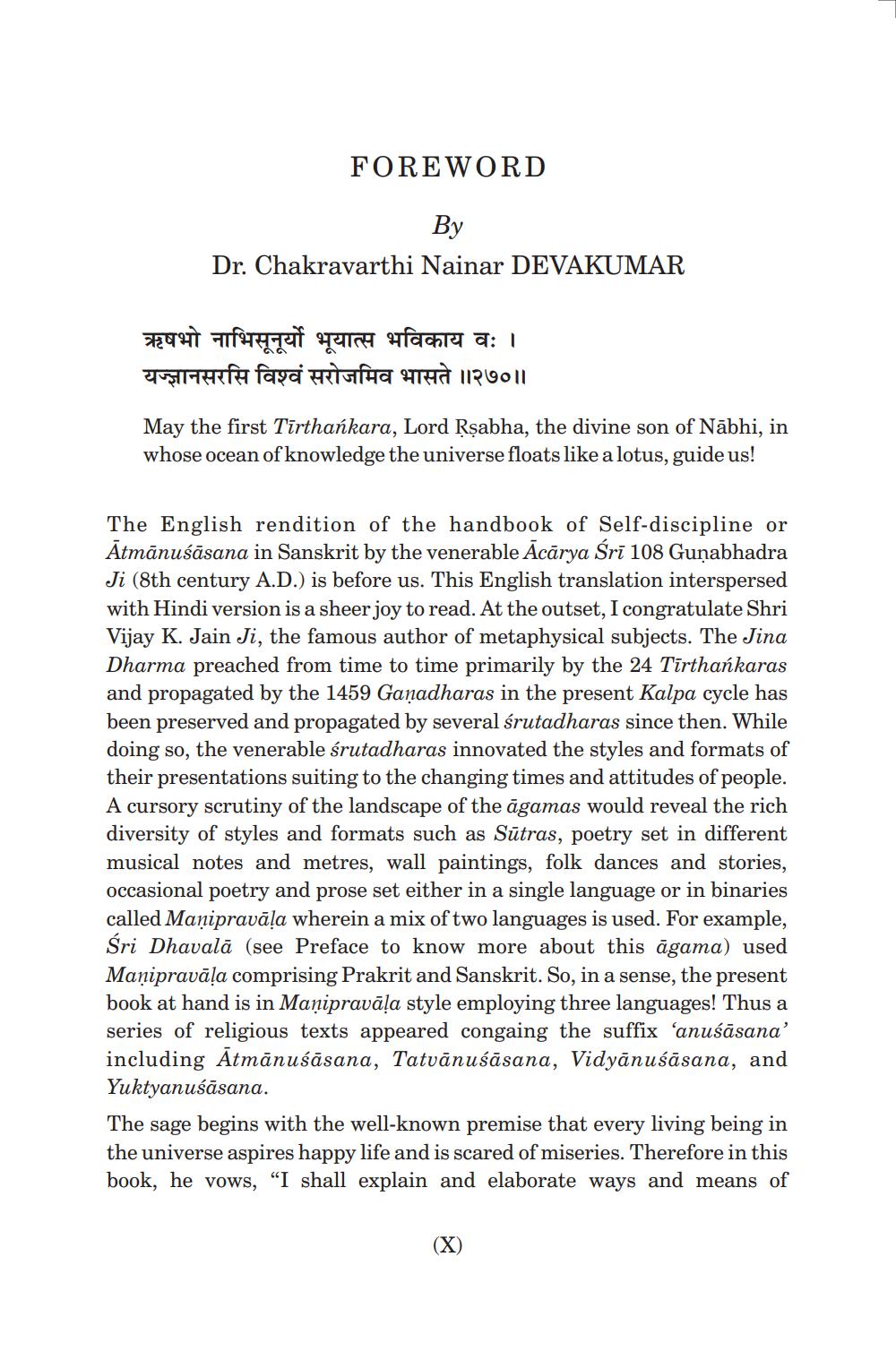________________
FOREWORD
By Dr. Chakravarthi Nainar DEVAKUMAR
ऋषभो नाभिसूनूर्यो भूयात्स भविकाय वः । यज्ज्ञानसरसि विश्वं सरोजमिव भासते ॥२७॥
May the first Tīrthańkara, Lord Rşabha, the divine son of Nābhi, in whose ocean of knowledge the universe floats like a lotus, guide us!
The English rendition of the handbook of Self-discipline or Atmānusāsana in Sanskrit by the venerable Acārya Śrī 108 Gunabhadra Ji (8th century A.D.) is before us. This English translation interspersed with Hindi version is a sheer joy to read. At the outset, I congratulate Shri Vijay K. Jain Ji, the famous author of metaphysical subjects. The Jina Dharma preached from time to time primarily by the 24 Tīrthańkaras and propagated by the 1459 Gañadharas in the present Kalpa cycle has been preserved and propagated by several śrutadharas since then. While doing so, the venerable śrutadharas innovated the styles and formats of their presentations suiting to the changing times and attitudes of people. A cursory scrutiny of the landscape of the āgamas would reveal the rich diversity of styles and formats such as Sūtras, poetry set in different musical notes and metres, wall paintings, folk dances and stories, occasional poetry and prose set either in a single language or in binaries called Maņipravāļa wherein a mix of two languages is used. For example, Śri Dhavalā (see Preface to know more about this āgama) used Maņipravāla comprising Prakrit and Sanskrit. So, in a sense, the present book at hand is in Maņipravāļa style employing three languages! Thus a series of religious texts appeared congaing the suffix 'anuśāsana' including Atmānuśāsana, Tatvānuśāsana, Vidyānuśāsana, and Yuktyanusāsana. The sage begins with the well-known premise that every living being in the universe aspires happy life and is scared of miseries. Therefore in this book, he vows, "I shall explain and elaborate ways and means of
(X)




